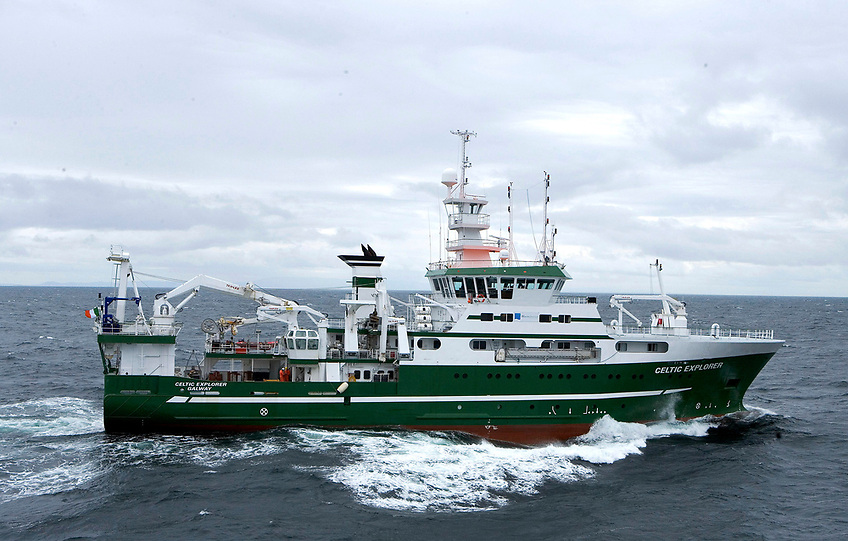The Marine Institute’s RV Celtic Explorer set sail to west Greenland in July, to facilitate a collaborative research survey between three American universities. The voyage will take the RV Celtic Explorer to remote locations beyond it’s typical expeditions in Irish waters, for scientists to observe how glaciers are changing using innovative technology.
The RV Celtic Explorer departed Galway on the 21st July and following a port call in Nuuk, the capital of Greenland after its Atlantic crossing, the vessel will travel to Uummannaq in Greenland in early August. The research survey, led by Professor Ginny Catania of the University of Texas, is a collaborative project between the University of Texas, University of Oregon and the University of Florida. The research survey aims to examine the rates of processes contributing to sediment build-up at the termini of outlet glaciers (producing moraines) to improve predictions of ice sheet responses to climate impacts. Results from the study will determine the degree to which moraines can be built fast enough to offset the retreat of glaciers from climate action.
The voyage will incorporate innovative technology to obtain first-of-their-kind observations and samples at the targeted sites. Sampling at active terminal moraines will be undertaken using a purpose-built ROV called Nereid Under Ice. This vehicle is optimised for surveying and sampling in deep ice-marginal environments, and will record unprecedented geological, geophysical and oceanographic measurements at the ice sediment-ocean interface. An unmanned surface vessel (USV) provided by Irish company XOcean will further aid researchers in obtaining data from previously inaccessible locations and allow the acquisition of high resolution bathymetric and oceanographic data right up to the face of the Giant Glaciers at the head of the Fjords which are being studied.
Scientists expect observations of the three glaciers to reveal the rates and distribution of processes contributing to moraine-building, but also importantly provide ice dynamic controls. Understanding the detailed mechanic of moraine-building will allow for far more accurate sea-level-projecting models of ice sheets to be built, furthering our resilience to climate change.
































































